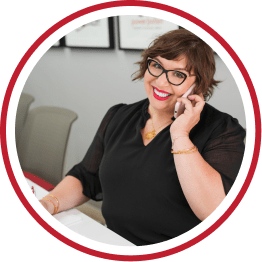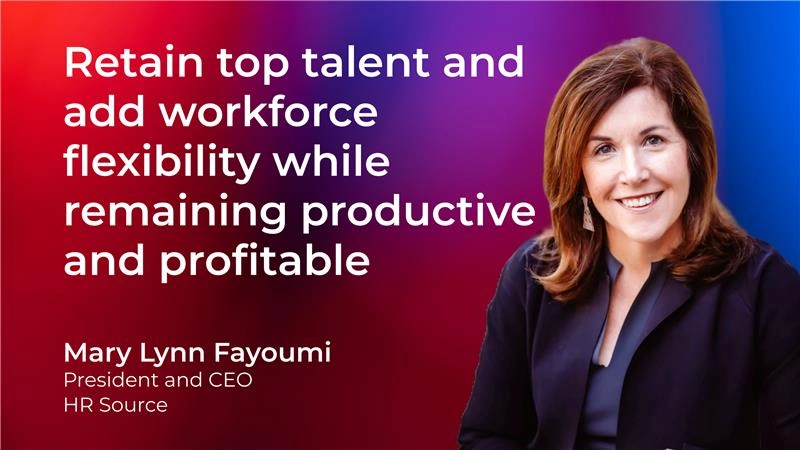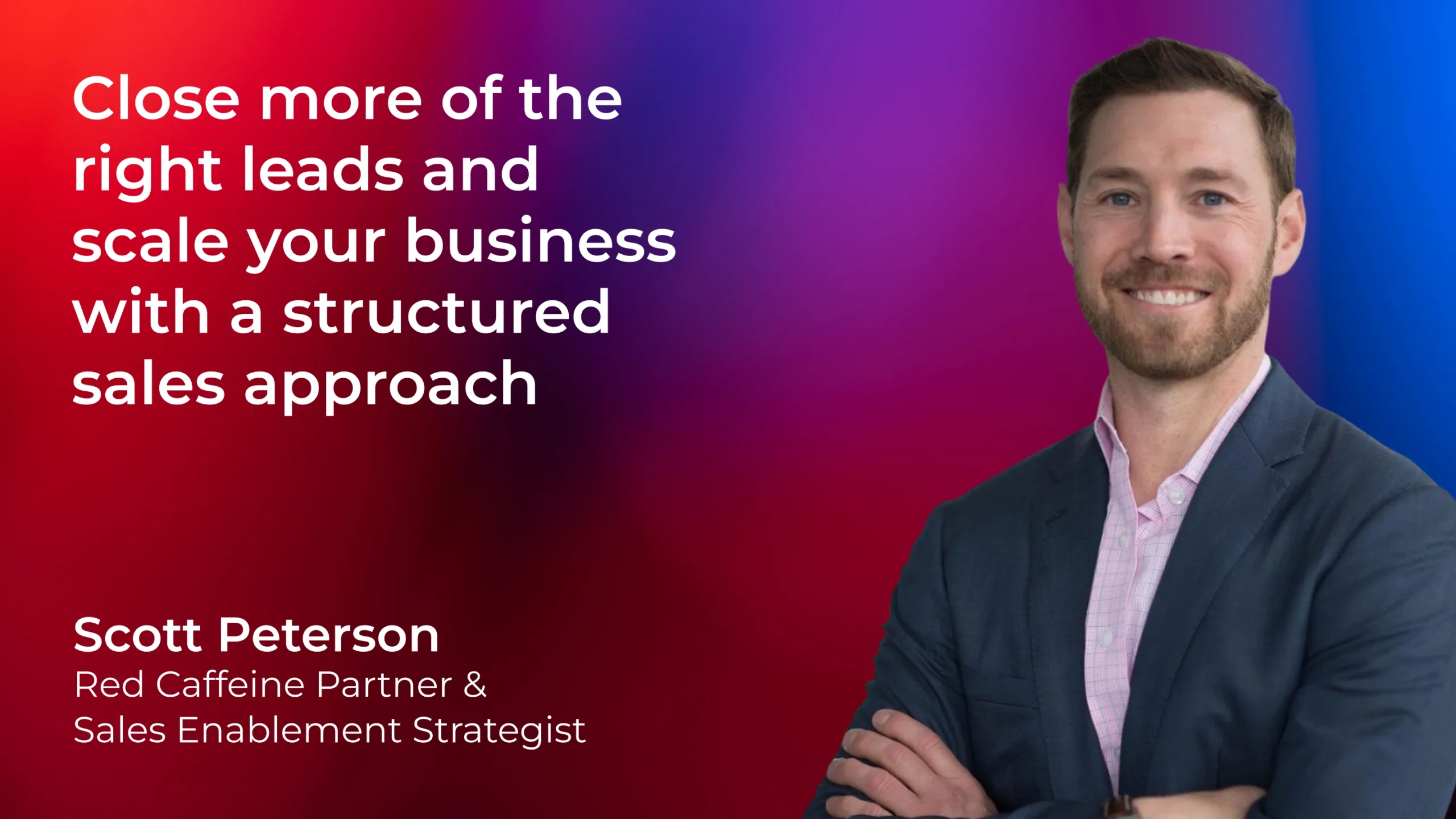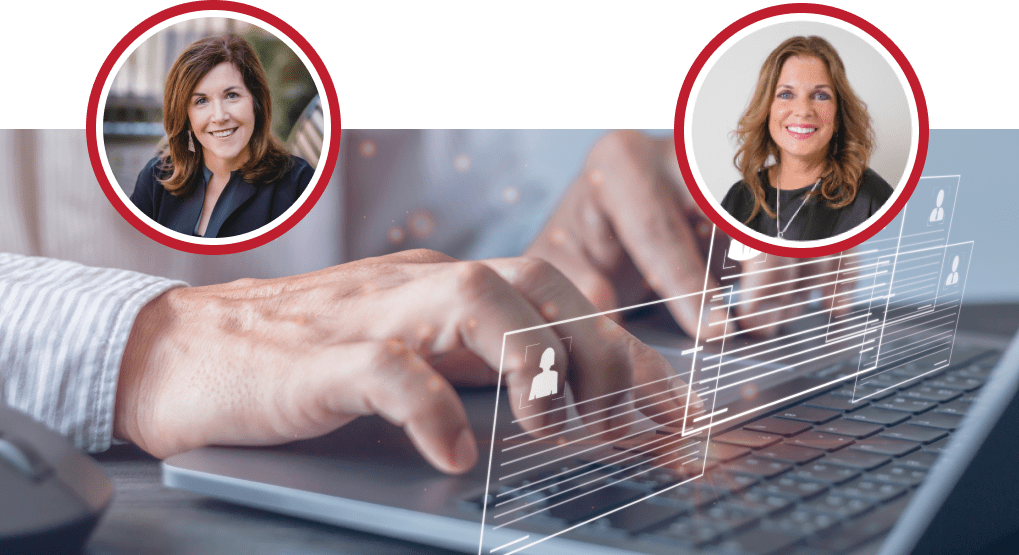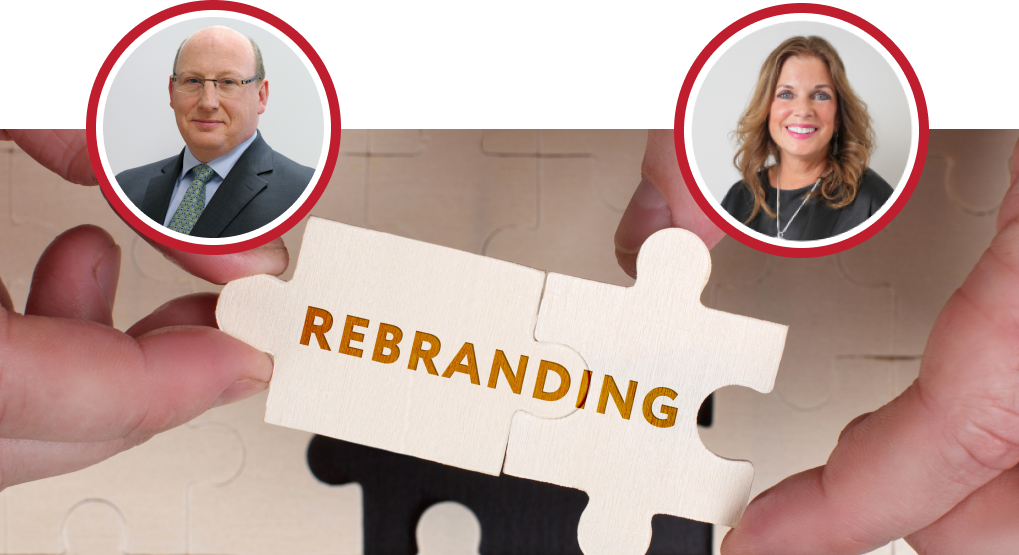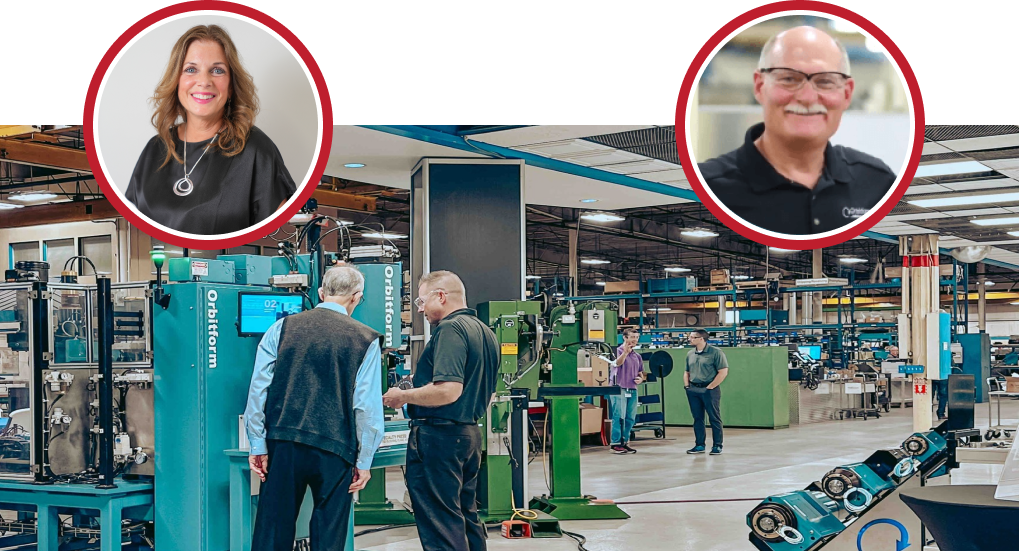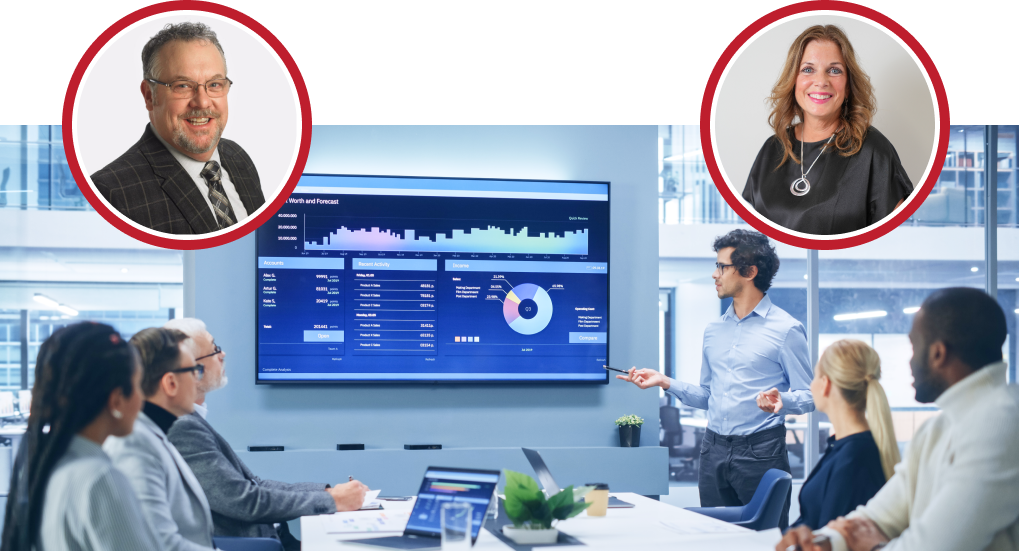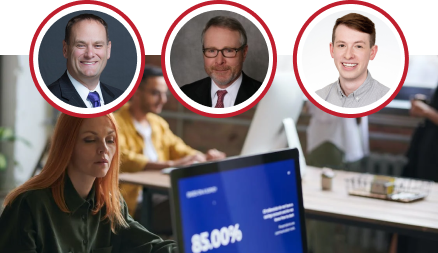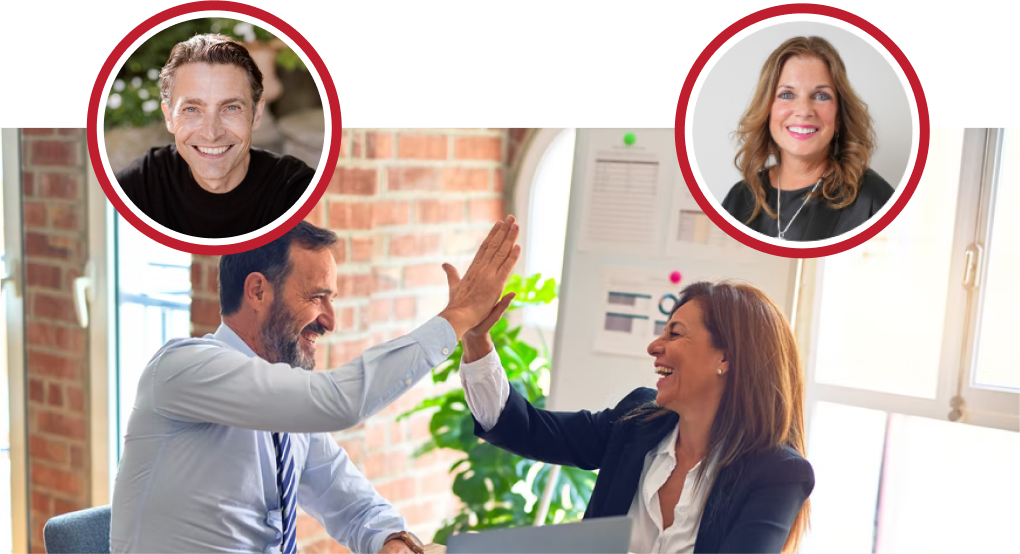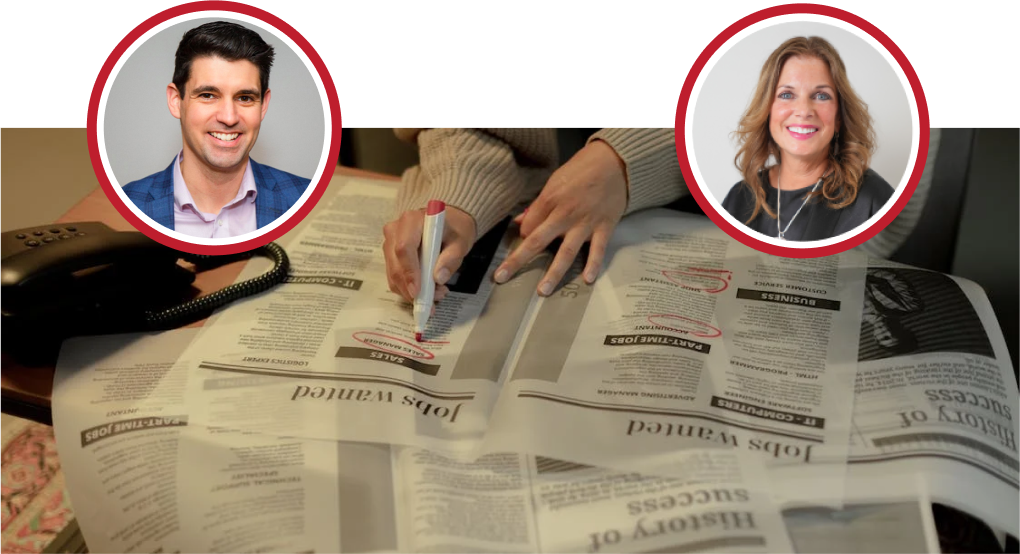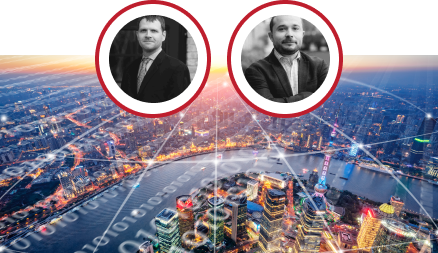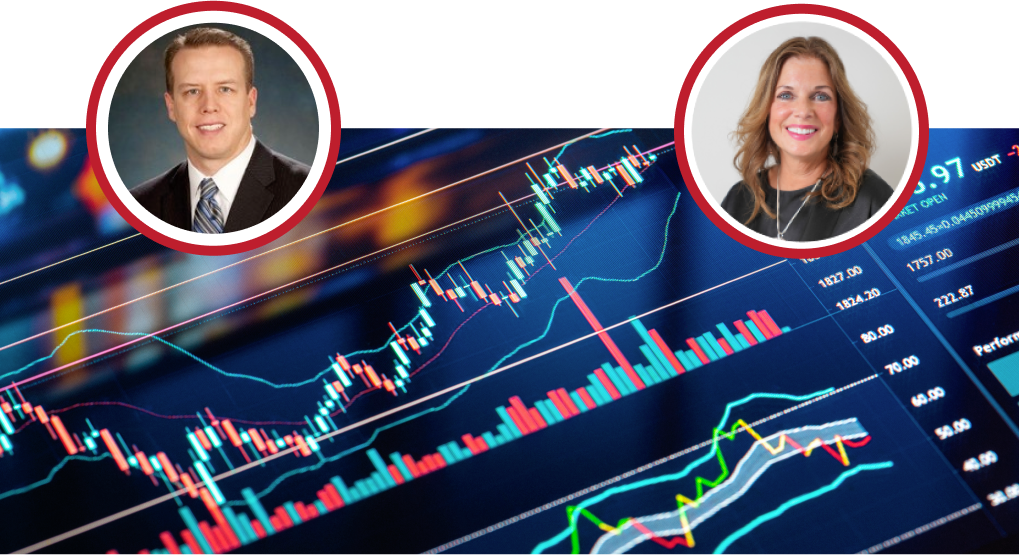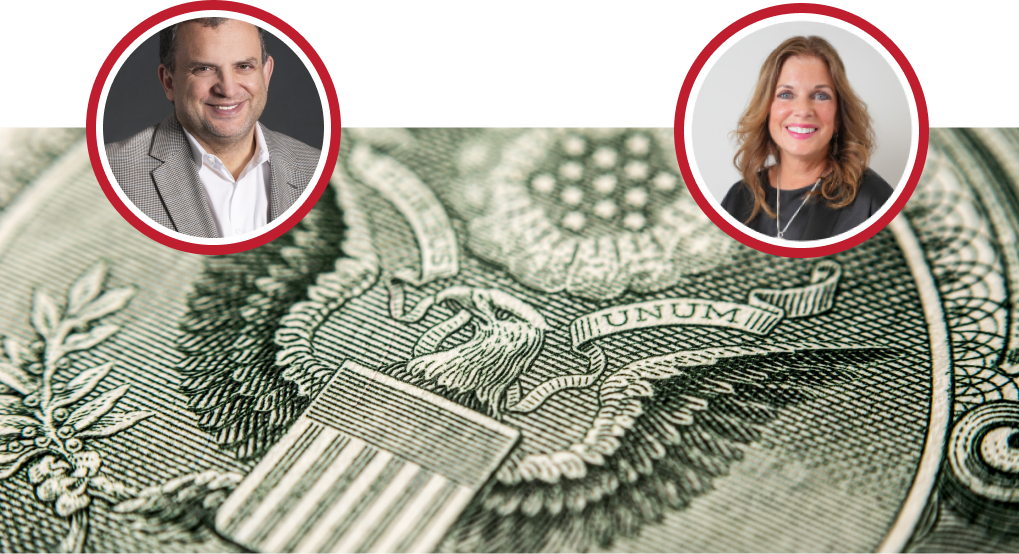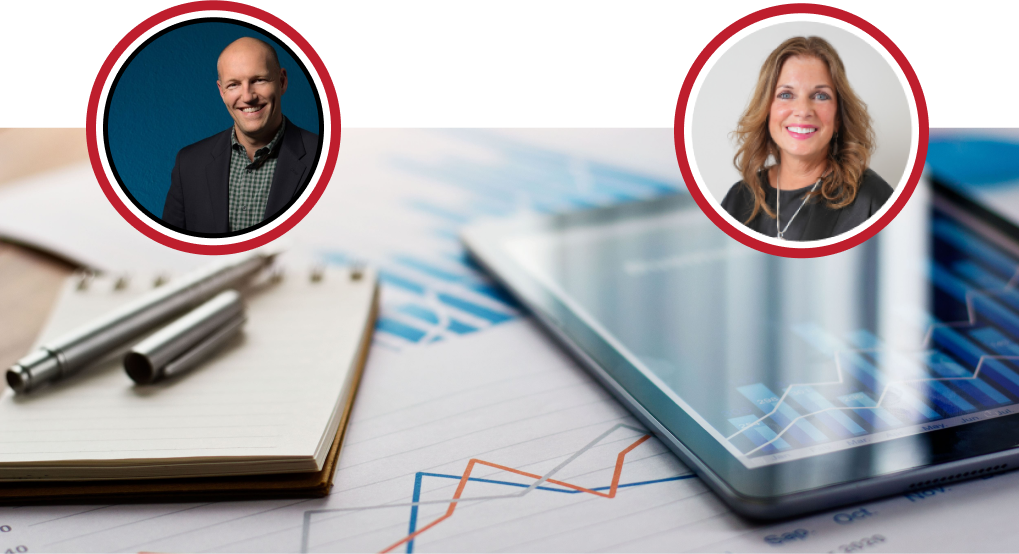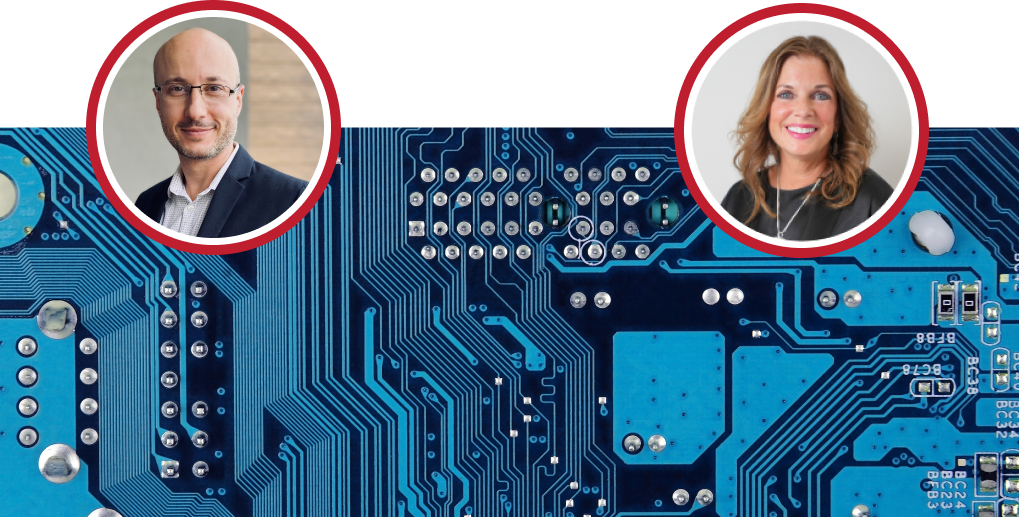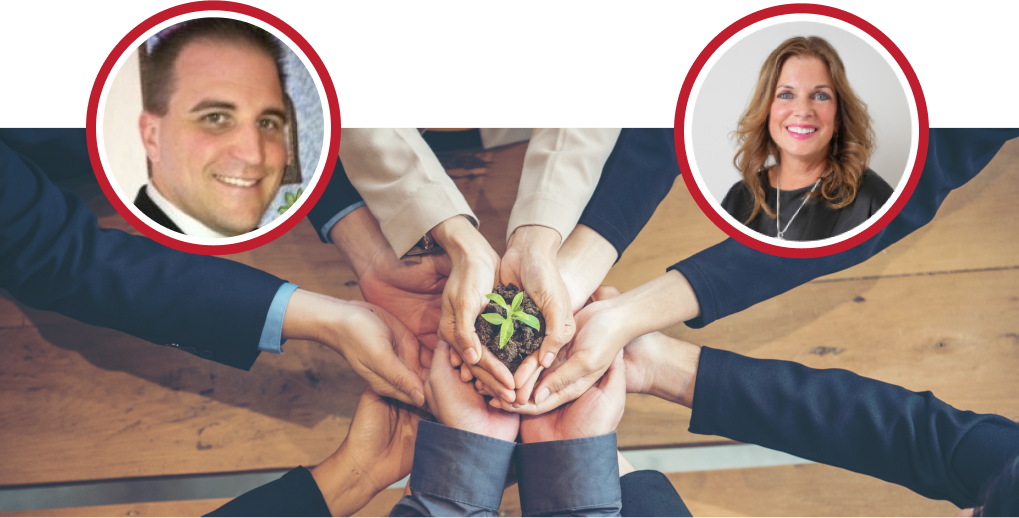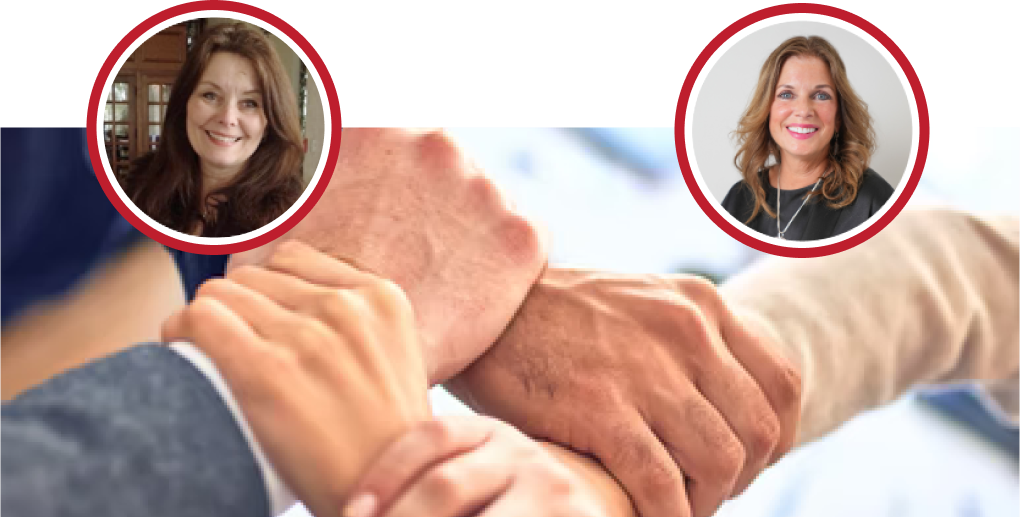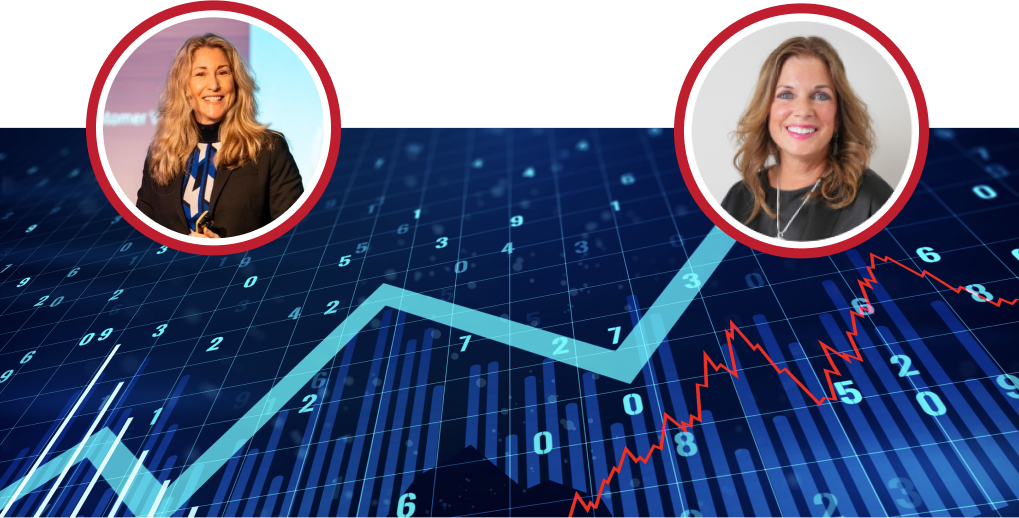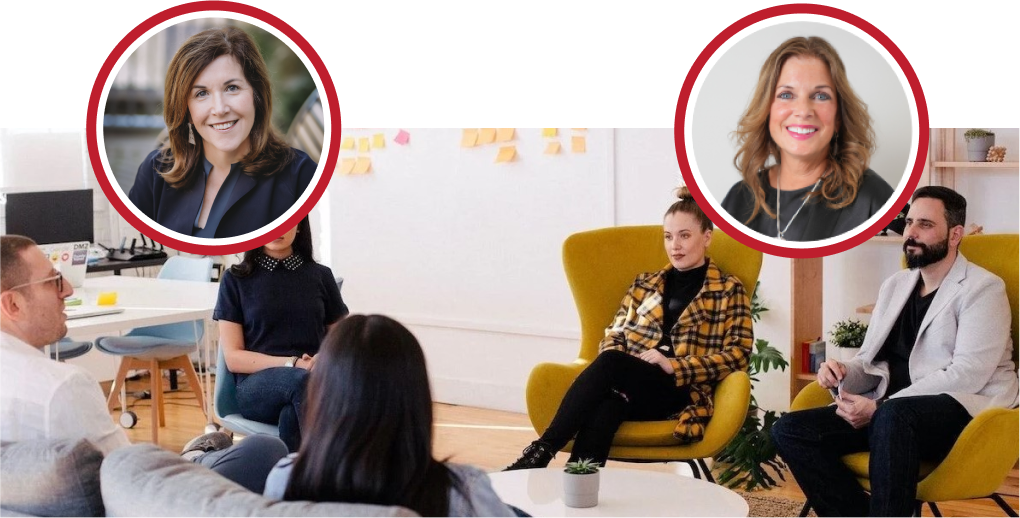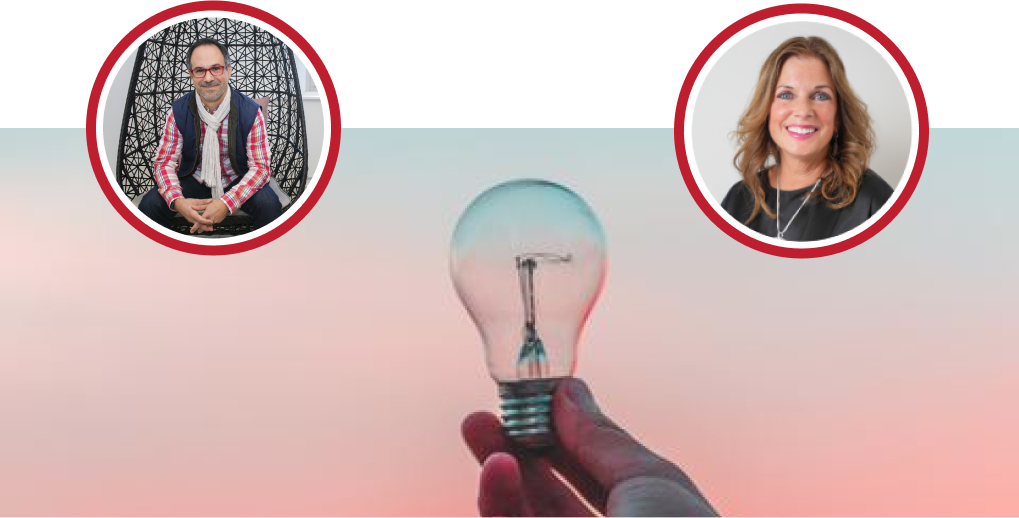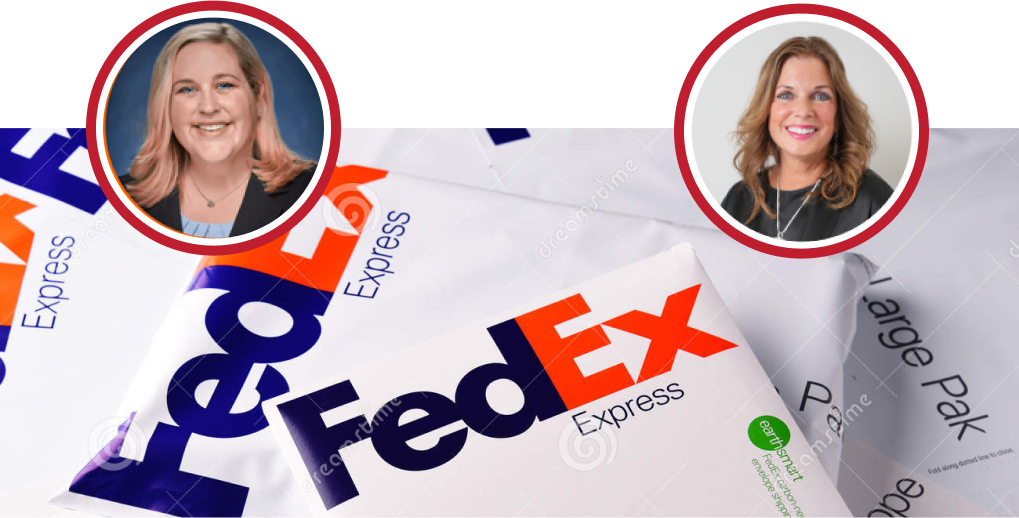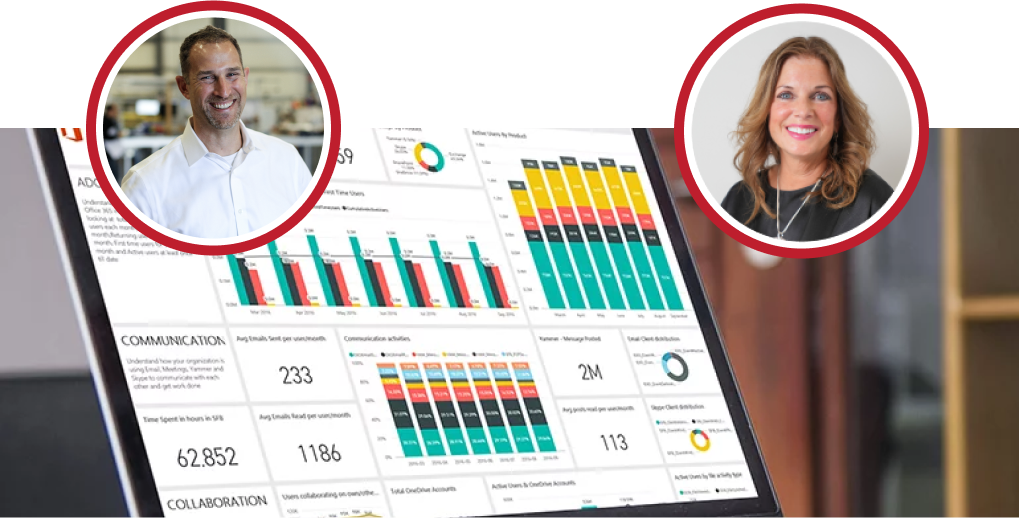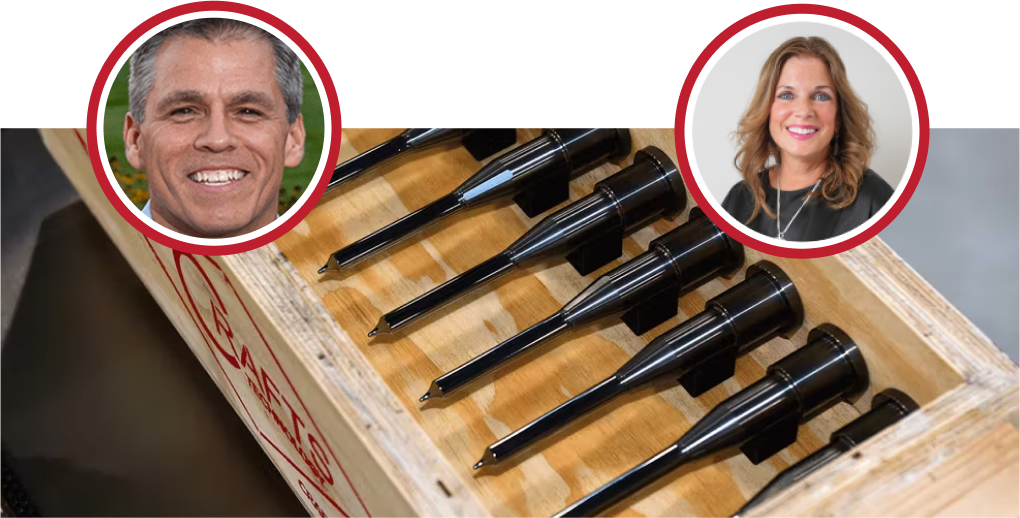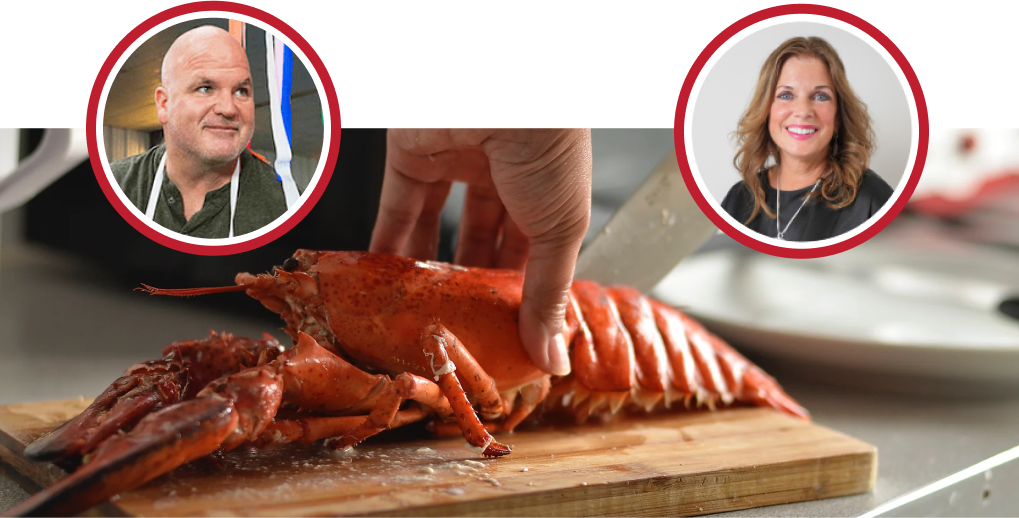Kathy: Welcome to business as unusual. We’ll get started in just a few minutes, so if you have a question throughout today’s livestream, please add it to the chat, and we’ll try to. I got to all of them throughout today’s session, so I’m going to start with a big-picture story. Imagine this. You’re an entrepreneur, Alex, and you’ve struck gold with an idea that promises to revolutionize how we approach environmental sustainability. It’s an app, and it’s called green pint. And it’s designed to minimize our carbon footprint by making small, impactful changes in our daily lives. However, amidst the digital noise and everyday distractions, even the most brilliant innovations can fade into oblivion without a sound go-to-market strategy or, as we call it, at red caffeine, a glow to market. Strategy. That’s the situation that Alex found himself entangled in. It’s a common thread amongst many business runners. How could Alex have identified and engaged his niche audience? The environmentally conscious, tech-savvy community? How should he have positioned green print amidst the other competitors in the market, and what pricing model would have struck the right chord? Most importantly, through which channels would he have his app best reach the screens of those making and seeking A greener tomorrow? As everyone on this call or this session can attest, we hear the same statement all the time. We’re a great company. But we’re a. Bit of a well-kept secret, and this is not coming from startup businesses. These are businesses that are 50. To 150 + 1,000,000 in revenue and may have been around for 1025 or even 50 years. The truth is getting a product or service into the market, or a new market, is more complex in itself than continuing to grow the business with the other dynamics that we as leaders face today around talent and technology and operational investments are why organizations need a plan that aligns all the company’s stakeholders behind one Vision 1 mission and one plan. These are the kinds of things that we challenge opportunities that we help our clients solve daily. Go to market planning. It’s a strategic blueprint that outlines how a company will launch products or services to its target market. Effectively engaging and acquiring customers. It encompasses various elements that include market analysis and defining customer persona. Competitive positioning and channel strategies aim to achieve successful market penetration, and revenue goals go to market planning to take that to the next level. By thinking more holistically about an entire company, the people, the tools, the technology, and the processes you need to reach your growth objectives, what better time than now? A few months before the start of the year, think about this. That being said, go-to-market planning isn’t just for, you know, the start of a new year. You can really do this type of thinking at any time during the year. So today, we have a few of our red caffeine. Experts to take us through how to get started. I’m Cathy Seo. I am the CEO and founder of Red Caffeine, and I have had the pleasure of building and executing an array of grow-to-market strategies over my career. But I’m thrilled today to have some of our C team members introduce themselves as we jump into today’s topic. So, Amy Anderson, would you kick us off?
Amy: Sure. Hi everyone. I’m Amy, the VP of Client Services at Red Caffeine. My industry experience ranges from the CPG world to financial services, higher education, and manufacturing. I love planning season, whether it be the start of a new year or the start of a new relationship with a new one, and it’s such a wonderful time of reflection of what’s been accomplished and a time of excitement for what’s coming next. I love helping clients acquire, integrate, develop, lead Gen, and lead nurture campaigns. So, all the different pieces that make up our grow-to-market strategies.
Kathy: Christiana.
Christiana: Yes. Hi. I’m Christiana Henry. I’m an account director here at Red Caffeine. I’ve spent most of my career in the digital marketing and branding space for both large and boutique agencies. And here at Red Caffeine. I love integrating my background with our strategic planning and business growth approach for my clients. I’ve worked with my clients on a range of goals, including market expansions like new geographies, new services, or new audiences, rebranding both for the external side and their employee’s side, and sales enablement and optimizing digital presences.
Kathy: And last but not least at all, Bill.
Bill: Hi, I’m Bill Skoronski. I’m the senior content marketing manager here at Red Caffeine. I’ve actually worked in marketing, communications, and branding roles for 15 years or so now, and I’ve always focused on helping companies think a little bit differently about the best ways to grow their business. My career started in journalism, and then I worked in several nonprofit organizations, so I’m most interested in helping clients go to market. With a compelling narrative, a story that helps them stand out and otherwise see sameness, as you mentioned. Kathy. So I’m. I’m really excited to be here today and looking forward to this conversation.
Kathy: Yeah, this is definitely one of the most exciting and fun parts of what we do with organizations, and so we’re going to. Start really. I mean, this is a big process, as you can imagine; we’ll try and make it a little bit more simplified, and we’re going to start by talking about the type of eight types of questions that we really really drive our planning so if we can kick it off with you Amy.
Amy: Sure. We want to go to the first slide. One of the first things we do is we really like to take that 30,000-foot view of the business. This is supposed to be a little bit more on the objective side, but think about what’s working. So, here are some questions that are helpful and kind of take as thought starters too well: how do I answer what’s working? Well, if you think about what is going well across the business, where are you seeing and feeling success, what campaigns or channels are generating the most sales-qualified leads, or what products and services are generating the most consistent revenue? We can also take it in a different way to determine what internal processes or technology are most helpful. How are these things contributing to what you feel is working well in terms of what’s challenging? On the flip side? What issues are you? Facing across the business, what isn’t working, how you expected or needed to be, what problems need to be solved? You can think about these things across people, processes, tools, and sales partnerships. You know, the full range, you know, internal employees, but really picking apart what are the things that are working and what’s? Ageing, we’ve prepared a few examples on each of these things, too, just to give you some further insight into how to talk about these things are the types of things to think about. So Christiana, do you want to share a few examples of like in? That’s what is working. Realm some of the types of things you hear.
Christiana: Yeah, I’d love to. So I’m thinking recently about some of my clients for whom we’ve recently. Launched new websites that are now moving their customers and visitors through new user experience paths that we created to generate conversions, and this was not something that was happening previously, but they’re they started wanting to think about planning for conversions like downloads, landing pages, or even reservation systems and other sorts of Technology applications that they wanted integrated and qualified leads. So, seeing those through the top of funnel tracking like lead feeder or chat. So, think about how your website can play into your overall plan. We’ve also had a few engagements recently that were working really well when we were working with the sales team and giving them time to focus on top prospects. We’ve seen it work to automate email, quote follow-ups, customer satisfaction, and order experience surveys, and even re-engage with lapsed customers via things like their CRM platform. Terms, the final thing I want to say about what you know when you’re thinking about what’s working is, you know, planning for multi-channel marketing campaigns can work very well for clients who need to reach audiences across a few different spaces or for general brand awareness like thinking recently of one of my clients who needed to promote their offerings. Across five different geographies, how would the right channels reach their audiences in those right areas?
Amy: Great. Thank you. And then, on the flip side, it’s really important to think about what those challenges are. So, there are some recent challenges that I’ve been a part of those conversations: one client recently made an acquisition, and the integration is proving to be challenging. So we’re starting conversations around. What does that mean? What could go into the plan now? And next year, that’s going to help smooth out that integration. You know, looking at things like employee satisfaction and the effect it’s had on. Culture, or the effect of market awareness, and how the companies coming together will go to the marketplace as one entity or even internally operations-wise, how will those all of the different tools and technology come together in a way that works for both sets of companies? Another challenge that we’re helping a client with now is they want to restructure their sales from channel partners and go direct. So we’re in conversations around adding an e-commerce. You know how they do business for their company and website and other challenges I’ve heard recently. Change from, you know, one client is doing a great job retaining current customers, but those customers are ordering smaller quantities. So we’re going to dig in and find out what’s going there, or you know, we’ve recently had a client say that their technology is in the dinosaur era, you know; so what can we do to help get them? Up to speed and with all of their technology.
Kathy: Yeah, these are really big, meaty problems and challenges, so, you know, exciting opportunities to help level these organizations up. So let’s take the IT to the next question, Amy. What would be the 2nd place we then dig to dig in?
Amy: Sure. So those first sets of questions are a bit more rational and objective, and you’re using data and really understanding what’s working and challenging. And the second set of questions is a little bit more emotional. It’s a little bit more, you know, the feeling space of what you are excited about and what’s keeping you up at night. Do you know what are those? These are almost intangibles that we must uncover and discuss and ensure we have a plan to address. So, on the excitement side, you know what you are looking forward to? What is the team excited to make happen? You know, being able to. Having those projects and things where everybody is bought is important, or you must get to the market quickly. You know what will have the biggest impact on your business, and this could be something you’re excited about or something that’s keeping you up at night, but there are a lot of factors at play that should be considered. As you’re thinking about what your next step plans will be, and then on the other side, you know what you are anxious about? What internal and external barriers are preventing your growth? What are those things that? OK, fine. They might not keep you up at night, but you have that niggle, you have that, you know, I’m hearing about this competitor, or I’m hearing about this coming into the marketplace. We need to address this. We need to have. A real conversation about it. So this is. A little bit more on that emotional. Side of figuring. Out what you need to do next. So, Bill, do you want to share some examples of what you’ve heard clients excited about?
Bill: Yeah, I can’t get the image of a dinosaur using a computer out of my. Head though. You picture AT Rex going into the keyboard. No, I’ll go. Go. Go to an example that we just heard this morning. Excited client talking about the growth of their industry. It gave me the sense that many companies are now moving out of this pandemic slash-recession survival mode, and they’re being much more proactive about moving into a growth mode, which is great to see. And whether that means they’re launching new products or new services or looking into adding additional capabilities. They’re investing in people and technology or any, as you mentioned, through mergers; we’re seeing a lot of companies adding capacity and expanding locations or entering new markets. I think they’ve hesitated to do that the last couple of years, so many companies are getting more excited about solving these foundational issues holding their growth back the last couple of years. And pour some gas on the fires where they see an opportunity. That’s what I’m seeing. And I’m excited for those companies, too.
Amy: Some examples on the flip side of things that we’ve been hearing that keep people up at night is economic instability, right? There’s the positive side of what’s happening in the world and the scary side. You know, what do the economic downturns need to mean? You know, how can this? Everything that’s going on affects business profitability and sustainability. At all. We’ve also had a lot of conversations around digital transformation and people realizing that they can’t keep doing things the way they’ve always been doing with the advances in technology, the need for data, and how many more decisions are being made by the right kind of data. You know those types of changes. It can require significant investment in change management, so how will they make that happen? Another area is workforce dynamics. You know, with the rise of. Remote work the gig. Changing the economy and employee expectations and managing and retaining the right talent becomes a lot more challenging.
Kathy: Yeah, and just, you know, I think because of the way we look holistically, you know, beyond just sales initiatives and marketing initiatives, it. Gives us that. You know, bigger-picture thinking, and there’s so many integrated ways that these things touch each other. Technology touches sales and marketing as well as talent. An acquisition, so you know, really having these very big open-ended conversations just helps us hone in. On what our? Focus areas for an upcoming year or plan, but not, you know, making it so narrowly focused on just one objective. So, let’s take us to the next set of questions. I think Christiana, you’re going to jump in here.
Christiana: I am, and so while Amy walked through questions one and two, which are about looking inside the business and thinking about. You know where you’re at as an organization; the next set of questions is about looking outside the business and thinking about having some of that external perspective. So, question 3 here is about what’s changed in the marketplace. Some questions that you would want to ask yourself are: Are they new? Are there any new competitors? What are new products and services that are out there? What new technology can you be implementing that has been launched? Is anyone doing things differently? What do you wish you had thought of first? What are your customers or prospects asking for or reacting to? Some examples of this might be, you know, you’ve got new competitors who’ve entered the market, or a manufacturer that we distribute product for has changed, what it means to be a preferred distributor. And so now they’re having to revise their plan. So that they can meet those new criteria. We spend a lot of time replying to customers and prospects who want to know if we have certain parts in stock. I’m hearing this from several of my clients, and they want to know how to restructure or allocate their team differently so that they can address aftermarket parts of their business or areas of the business. Which unexpectedly grew this year to keep up with what was happening in the marketplace. Kathy, I’d love for. You can share a couple of examples here, too.
Kathy: Yeah. I think we’ve also heard people wanting to really, you know, their customers are asking questions about their performance in an industry like theirs. So, I like being able to showcase things that they’ve done. You know, in marketplaces, you need to be able to show that successful path. Another thing that has been happening quite a bit is the vendor consolidation initiative, so, you know, larger enterprise organizations looking to streamline their buying process, you know, through one-stop-shop experiences. So, how do you strategically combine your offering, whether it’s through an acquisition or merger with someone else or form some good, you know, marketplace? Strategies with partners that are also selling into the same sector. So, you could provide that end-to-end experience for your customers. And then I think we’ve touched on this, you know, technology is a huge hot button throughout some of the things. So what, you know, what else can we do in terms of our business in terms of getting more access to sales data, you know, how can we automate some of the processes because we’ve got to lead our team? We’re trying to do way more with less. And then, how are we looking at productivity and performance metrics? You know, really understanding how to. Incrementally and, you know, even beyond incremental improvements in our ability to perform and serve our customers using technology and certain aspects of our business processes.
Christiana: Awesome. Thank you, Kathy. If we want to go to question #4, please. So this is where we want to think about what’s next. You’ve taken the inputs you’ve gathered from your first three questions and want to apply them to what’s coming in the next chapter for your organization. So, questions to ask yourself are: What do you want to accomplish in the next year and the long term? What are your three to five business goals for next year? And you know, we like to think of smart goals here, so smart means specific, measurable, achievable, relevant, and time-bound, making sure you’re holding yourself accountable. For those. To those data points and having some action around your goals, what do you want to keep doing that you’ve started? Or what is something new that you want to be able to tackle, given all of the inputs that you’ve gathered with the first three questions? And then, how will you tell your story? How? Will you go out? To your audiences and your different geographies. And different marketplace areas, Bill; I’d love it if you could share some client examples here.
Bill: Yeah, I’ve got one that rains. This is at the top of my mind. It’s the current for us. A couple of us are working on this account, but it’s a company that wants to expand into new markets, which we’ve already talked about quite a bit. But at the same time, they’ve got some issues that they have to address regarding brand awareness in these areas. They certainly are less well known in certain geographies than in their home. Geography. They also have some high internal turnover from a staffing standpoint, and in certain parts of the company, there’s low morale. So before they go into a new market or consider growth through acquisitions or mergers, they really have to consider these national funding challenges. Otherwise, anything that they do going into a new market is. It’s going to fall flat. So we’re suggesting they think about what’s next, look at the more foundational positioning for their brand, and ensure they have an intentional talent strategy. So that whatever comes next sometimes it’s less tactical than that. And they’d like it to be, but certainly more strategic. These initiatives, like market research and stakeholder interviews, will set you up for success when you decide exactly what’s next and which direction you want to aim, whether it’s 2024 or the next three to five years. So that’s one example that speaks to the importance of taking a step back and being more relaxed in pursuing a new opportunity once you set the foundation for that fertile growth environment.
Christiana: I’m so glad. Yeah. Oh, sorry, Kathy. Go ahead.
Kathy: I just want to jump in here because of it. Brings to mind something that I know Amy on a piece of business she works on. You know, because we’ve. Set the foundation so well for certain organizations when a change or opportunity comes up. We can use it. That blueprint to take advantage of those types of things. So. You know there’s. There’s a lot of value in showing up you, know, the existing. Issues are going on within an organization because as opportunities arise or you are going to enter a new market, you’re just so. It’s a much better setup for success in those situations.
Christiana: Yeah. Well, I think it’s well put, and we should move on to question #5.
Kathy: Did you want to share? There was one other example you would share around employee recognition.
Christiana: Yeah. Yeah. Happy. Sure. Yeah, I’m happy to share that. That one is so. For this example, I was thinking about one of my manufacturing clients focused on training its managers to train other employees. As part of their retention and recognition efforts, they felt that giving their managers and employees who complete the voluntary training some on-the-spot recognition could motivate the rest of the team. And keep them engaged in the business so you know as much as you’re thinking externally about your plans and what comes next. It’s important to think internally and, you know, even adding to the example Bill shared, here again, the recommendations are. It will partially be about how you recognize your employees to help some of that low internal morale they’re experiencing. We’re thinking about structuring the employees differently to service some of those new markets and experience the growth they’re looking at. I urge you to think about what’s next for your employees as much as you’re thinking about that for your clients.
Kathy: Yeah, I think that you know, we’ve seen a little bit of like taking the foot off the gas in terms of the aggressive hiring that we’ve experienced over the last few years, and everybody’s, you know, appetite for making sure they’re fully staffed because that has been a competitive advantage for a lot of organizations. You have. Not the right. People to deliver; even though you know we’ve seen some layoffs in the last year or so, I still feel like this talent situation will never happen. Go away. There’s. Just completely vacant areas in our economy where people must enter the workforce. So you know, being able to. Take a little bit. I think it is about growth, looking internally, and shoring up those things. Huge opportunity for organizations right now. So why? Don’t we take it on to question 5?
Bill: Yeah, this turns it fully out. We’re out. We’re looking when we think about long-term planning. Everyone wants to know how. How can we reach the target audience we need, whether that’s people we want to buy our product or services, our customers, or Kathy’s? You’re just mentioning the top talent in our industry; how is it that we’re most likely? To reach them and. It’s not a new question by any means; it is certainly a long-standing question that has historically been answered in various ways. Still, from my perspective, at least my experience as a content marketing manager, it’s through audience-centric content. Now, that requires us to step back and say if we want to reach our audience effectively. We have to understand not only who they are but what motivates them to take action, and that requires some research. It requires building effective personas and understanding from the customer’s side of their buying journey. So once we have all that information, you know we’ve got. To make sure that we have a. Integrated multi-channel distribution strategy to get the right message in front of the right people at the right time, and historically, by now, we all should know exactly how easy it can be to reach out to customers. Yet, simultaneously, it is hard to engage them and move them from awareness to action. When we talk to companies at this time of year or when they have turned over their fiscal year, we’re talking about planning. There are a lot of them for the long term. Living in what I would describe as this marketing chaos, they’re constantly pressuring themselves to create something, create anything, as long as it’s new, whether it’s a blog. Social media posts email newsletters, new ads, etc., every month because that’s what they’ve done for 15 years. And they’re terrified to stop. They’re terrified to take their foot off the gas. But the problem is that they’re also, more often than not, thinking about content from a very self-centered perspective. Publishers perspective, in which they assume that everything that they’ve done before has been seen. Everything they’ve created and everything they’ve published has already been seen. People need more time. That and that, for some reason, there’s demand for that elusive next piece of content. But these are low numbers if we look at engagement rates across email, social media, and advertising. So, as I mentioned above, we can’t lean on historical data to say. That way, we can keep putting out the same quality of content, and we’re going to keep reaching our target audience. The truth is, most people don’t see the stuff that we put out there overwhelmingly. Most people need to see what’s been created. So that is the amount of time in those resources that we’ve historically invested. Reaching our customers is no longer justifiable using a manual workflow. By that, I mean if we’re not using tools like artificial intelligence or if we’re not using some sort of structured framework that makes us more efficient. So that the. The conclusion to that answer would be that the best way. I believe that to reach, engage, and ultimately convert our audience is to get to know them as well as possible. To understand what motivates them and how they make a purchase, and then only commit our resources to the channels that our data tells us customers use when they’re looking for those solutions that we provide that is the best way. I think that we can effectively continue to reach our audience consistently.
Christiana: Yeah. Or if I could just type in, I would say, you know, one of the best ways as you’re thinking about getting to know your audience as best is asking yourself some of these questions. I’m suggesting here that I want to think about what motivates your customers and how they move through your buying process, what your data tells you, and looking at that big story. So, to Bill’s point, you can evaluate which content pieces will reach them; what can you resurface? Do you have your buyer personas defined, or have they been updated recently so that you’re thinking truly about what your audience looks like now, given marketplace changes or given changes in your goals? And then, are you willing to commit to doing something for an entire year? I think we see lots of our clients. To try something that doesn’t work the first time, they want to stop, but consistency is key in giving something a chance to play out and build some of that trend in data. I think one of my clients that keeps coming to mind as I think about really using the data to inform their planning decisions is one of my food service clients who felt confident in the audience that they had for both their restaurant and their lounge spaces, but. After we evaluated their website data, we found that their audience is, in fact, three different personas for each of those spaces. So, there were six total personas that they had yet to consider so we could plan for them and start. Aiming that messaging to them and thinking about what channels would reach them best and what you know about what content would reach them best. So, you know, want to ensure you’re considering how you’re getting to know your clients through these questions. And then, once you have those answers, think about how you get out and know those audiences best.
Kathy: Yeah, I think you. Know Christiana and Bill. Maybe you could touch on this. We also are working with leaner resources, so our teams are smaller. So they’re how we use certain tactics from some client examples to extend how we’ve done it in person. Can you speak? To some of those examples, Bill I. Think you had?
Bill: Yeah, we’ve got. A couple of. Clients that we’re changing the way. For example, organic social media has always been somewhat seen as. A page company page out organic distribution, and then there’s a whole other side of it in which people like you and I post daily. So what we’ve done with one of our clients recently is. Shifted the amount of time spent on creating company content that comes from the organization and goes out every month. And looking more at how we can help their senior leadership engage on a one-to-one level, whether that’s directly through new customers, through a direct message campaign to say in a, in a very personal way, we’ve got data that says you just bought for the first time from us. I just want to welcome you to the company personally and show that we’re very customer. Centric organisation. You can reach out to me directly anytime that you want to. Also, we can help those senior leaders craft compelling content because they have the networks and connections from top to top in an organization. Unfortunately, what they need is a lot of time. To create new content and think through it, what will I say six months? From now I. I am still trying to think of what I will do 6. Days from now. I’m too busy, so by building a very topical and always relevant framework, which I’ll get into in a few minutes, we can help leaders map out their content strategy. Social media through events or email engagement is a way that we’ve been able to increase engagement rates and help companies in the area where they need help to help themselves because of the lack of resources.
Kathy: Yeah. Thank you. So. Much that’s that’s great. All right, let’s move on to question number six.
Bill: Yeah, I think if question #5 is. How do we? Reach the audiences that we want to in the best way possible. It sets up our conversation, but the next logical question is, what if things change throughout the year? How do we commit to a long-term plan for reaching our target audience, knowing that things six months from now might be different than they are today? We look at. That plan is so. Unfortunately, that’s that’s one of them. My favorite and, I’d say, the most impactful things I get to do here at Red Caffeine is working with clients on long-term planning like this spec, fiscally from a marketing perspective, and what I enjoy doing is taking a company from very tactical. Monthly campaign mindset in which they’re asking themselves just what we will talk about this. What’s that next email newsletter going to? Be about we’ve. Do you have all this space on the calendar to fill? What are we going to do next? We are eventually moving them into a mindset that says we know exactly what we will address every month of next year. Each of those topics is aligned with our company goals, and they’re based on what we know our audience wants to hear again because we’ve done the research. And those companies? We’re saying we’re existing and leveraging at. We’re leveraging our existing assets instead of constantly creating new ones and changing our focus. Continually putting the pressure on ourselves to publish and create and edit and looking more at the library of resources that we already have available that we can just better distribute, and what they’re seeing is that now they actually can spend less time reacting and changing direction throughout the year and more. Time focused on making ongoing improvements to what they’ve established in the Longview is what they want to be doing throughout the year, and we do that at more of a tactical level by helping them focus. At the highest level possible on what few, I’d say 3:00 to 5:00. What small handful of cornerstone topics will be most relevant to the client year round? And then, as you see in the questions on the screen here, make sure we think through how we can help customers make? Better buying decisions in these areas. If we start with something like our value proposition or differentiators, if we look at the problems that we solve and the products that we sell and, of course, the people that we sell them. To then we. You can use an artificial intelligence tool like ChatGPT to generate a list. I like to go between 25 and. Fifty questions buyers of our products should be asking themselves around our cornerstone topics. Then, we have an overlapping piece in what we would call a Venn diagram between what matters most to the company and what matters most to the customers. That overlapping space in the middle is the content sweet spot we should try to hit year-round; that sweet spot should always be relevant, whether it’s now, March, or October. Next year, those factors should always be important. So what’s happening is we’re more than just talking about what we do or the features and benefits of our products. We’re becoming a valuable resource for our customers, and for anyone under pressure to make the right decision, we’re shifting the focus from what we want to tell them to how we can help them. And that’s what we. Call unifying Lighthouse statement. What’s that? One statement throughout the year that’s always going to guide what we’re doing to help our customers make better buying decisions.
Kathy: Yeah, could you? Amy, could you share a clan example here?
Amy: So, one example is that. We just started working with a new client, and they have been writing content, logs, case studies, etc., and even contributing to articles for a long time. But the existing. The content wasn’t easily accessible, and to Bill’s point earlier, they felt new content was always needed. And so one of the things we were able to do was help. Align on those cornerstones. Do you know the most important buckets or topics to your customers that you feel will be the most helpful? Then, we organized the existing content into these buckets and helped build that long-term plan. To be hitting on those cornerstones at key points. Of the year. But what it also does exactly to Bill’s point is we have a plan, but that plan gives you the freedom to be flexible. So when that unexpected thing comes up, or something happens in the marketplace, we have three articles on this topic. Let’s put those out in our emails. Instead, let’s send that out with our sales proposals. We have different ways that we can utilize the content that already exists to support the baseline cornerstones that mean a lot or to be able to address things that come up that they do.
Bill: Yeah, we, we started doing this in terms of building that type of pillar-based framework, probably the beginning of last year, and we started working with an A1 client in particular who wanted to focus on four specific differentiators, and they always wanted these very important things to be front and center. They’re on their web. But they were buried and. We asked how can we help people find the content we have. Available in various corners of our website related to these topics. So, we gathered all of their existing content and organized it into a library. So, the first step is to use that library to build four pillar pages, which have become valuable. Seo Rich has many resources for the customers, prospects, and even their sales team. So what? We also built an annual content calendar when we took that pillar approach. We filled it throughout the year with pre-planned email, digital ads, social media, and event focus so that we are constantly driving traffic through these four pillar pages and in a very integrated strategy where we rotate from one pillar to the next throughout the year to ensure that. From January to December, everyone was covered evenly. But that gives. You have a wide view of how just taking a very. A structured, pillar-based, or cornerstone-based approach can help you fill in a year’s content. Then, to Amy’s point, when things come up, you still have the flexibility to address them without stopping, doing what you were doing because you can no longer be in two places at once. So, the more time you put in advance in a long-term planning process like this, the more efficient you can be later in the year and the less time you spend putting out fires and chasing month-to-month production.
Amy: It also calls out. Gaps. You know, maybe you’re an organization that doesn’t have this huge library of content, right? But if you can align on those cornerstones, what are those unique differentiators? What are the most relevant things you need to say that will make an impact? In the market. Then you go and create that content around it, too. So it’s a nice way of understanding where the gaps are as well, which will help you put into place in the plan what you might need to create new things.
Kathy: Yeah. And I want to make sure that we don’t. Overplay the value. This is for sales teams. Being able to point to success, being able to point to subject matter expertise. Being able to invite somebody to a webinar or something that you know is a softer approach to educating your audience and making. And building those relationships is. You know, key pieces to the sales process. So, this shouldn’t just be on your website; this should be integrated into how the sales and marketing teams work together to scale the growth strategy. So, let’s move on to question #7. This is, you know, where the rubber meets the road.
Bill: Yeah, it’s one of my. Favorite and least favorite questions to be? Honest. Well, we’re talking about defining our success, I. Think historically, we’ve looked at. We’ve looked for, I should say, hard numbers. We’ve looked for a return on investment. We’re trying to understand what the numbers tell us, and in the past, if the numbers didn’t look good right away, that felt like, well, this isn’t working, and it’s not going to work. So we’re going to stop putting resources into these areas. And now, unfortunately, we have more access to data than we’ve ever had before. So it’s become much easier to say, well, we have sheets and sheets and sheets of data; some is good, some is not good, but we’re kind of stuck. So I think the question is two questions. First, from a quantitative standpoint, are we measuring what matters? Are we looking at things that have tangible benefits? And I qualify that question by asking if this data told you something in one extreme or another, would it change your behavior? And suppose the data would not change your behavior. In that case, it’s probably not the right thing to be measured because if you’re not going to respond to the data by doing something differently, then it’s probably a vanity metric. The second question in this process is, What can we do to qualify improvements that can’t easily be made? And that’s almost a bigger challenge because things we’re doing, whether related to internal processes or external brand focus, aren’t always very easy to measure. We know that they’re the right thing to do. We know they will improve everything else we do, but they’re challenging. To put a thumb on. So, one example is, within the last 18 months or so, we changed how we run quarterly business reviews for our clients to deliver more value to them instead of overwhelming them with, let’s say, 100 slides or graphs or charts, Google. Linux, we simplified the process around 3 questions. What happened? How should we feel about it, and what are we? I’m going to do it. That really changes the conversation because we’re still gathering the same data. But as growth consultants, our responsibility is to synthesize the information and turn it into actionable insights for our clients. For me, defining success is as much about what happened in the past as it is about what we can learn about it and how we can do better in the future. So that’s why I’ve been working for years to shift people. Being so obsessed with return on investment and thinking more about return on improvement, how can you improve based on the data you’re gathering? To set yourself up for future success, take your time with the campaign over to measure. Usually, think about what you’ve already measured to determine where your next campaign should be and how you move forward into the next four months.
Christiana: Yes, Bill. On that point, I’m thinking about one of the shared clients we analyzed recently. We looked at their campaign data and saw the engagement dropping after the first email. And so, we needed to change that messaging and how many emails were going out. The structure of that campaign. So I’m so glad that you mentioned that, and you know, it brings up this idea. We’ve touched on a few different times, which is. It doesn’t. Data only happens once, and you don’t measure the success of something just once; planning for and making amendments to your plan, you know, happens throughout the year.
Bill: That’s so indicative of growth in general, like you. Don’t grow one. If you’re not continually assessing what’s happening, you stop growing, so you must push. You have to pressure yourself to define success. It is the ability to keep growing year after year and not resting on what you did last year.
Christiana: Yeah. I want to share some examples of what KPIs people could look at for measurement because I think you know our audience might be asking themselves, well, what counts as data, and what can I look at? So, you know, things like your sales goals and how you’re tracking against those sales goals are really valuable data sets. Our customers respond. Consider knowing what quotes you’re providing to a particular sector for your sales efforts. A Net Promoter score or a customer satisfaction score and consistency in those annual surveys so that you can track your data over time and look at those trends. The same goes for employment satisfaction scores and consistency in those annual surveys. Those are really valuable data. Sets that you can be looking at. You know you’re also thinking about the stats you can gather through Google Analytics or reports like SEM Rush. Or, you know, other points of measurement. Lastly, consider the value of third-party qualitative surveys to assess trends and feedback. I know you are a huge fan of qualitative data sets and are digging deep into how a third party works. You know, a consultant or team member can really get to the heart of how clients, employees, or certain target audiences feel about something.
Bill: Absolutely. And we’ve seen it several times recently where a client says, “Well, we know how people feel. But we find that employees are much more open when a third party asks a question; they are so much more honest and transparent. I would argue that they’re probably waiting for someone to ask those questions because they want things to change in their organization or situation. It’s just that no one has put them in those questions. To them yet. So yeah, even if it’s building on the survey data you’ve received, there’s always an opportunity to dig deeper with one-to-one questions and have an objective third party do it otherwise. Customers are likely to tell you what you want to hear, but even if you can get a small group of very loyal customers who will be honest with you and build a customer library board. It’s a great way to go throughout the year. Say we talk 3 * a year. We want to know what’s going on in the buying process, what’s changed for you, what we. Can do better.
Kathy: yeah, I mean, I think, Being able to be. Open and honest in your organization and understand what people value. That can be both customer interviews and employee interviews that I think you can’t change. What you need to know is broken, or you can’t improve. You need to know to meet expectations, so you know it. It sometimes is painful to hear that you are a baby. Ugly or whatever. Comes out of you. But you know. That truth can help you improve. The other thing I just want to say before we close out and move into the final and 8th question is that. Marketing and anything we do within a plan needs to be set. It and forget it. Worked six months ago, and three years ago may not be working now. And the more you have it broken out. The easier it is. It is to pinpoint the area that needs to be addressed so you know you might have yet to have it. The same issue with inbound top-of-funnel leads three years ago because there was just so much pent-up demand as we were in the pandemic, but now it’s starting to get a little bit more contracted as the supply chain issues are evolving and changing. So you know, being able to. Know where you’re losing. Steam within the entire process is another thing we look hard at when doing this kind of look-backs and look-forward evaluation of how an annual or go-to-market plan is performed. So, the last piece is something you know we want to ensure we address. Is that the? 8th question is who do we include in these growth market initiatives, and you know, strategic planning exercises, so you know for. Us. We feel like it. Starts at the. Top getting a. Group of the. C-Suite leaders in an organization to sort of set the vision of short and long-term growth. We love thinking three 5-10 years out but scaling it back to what can be done in one year. So you’ve got sort. Of the current state. The, you know, the one year like. Future state and then maybe a three-year future state. So, people you would want to include in that part of the process would be senior leadership and people on your executive team, the CMO, CEO, Marketing officers, CEO, and CFO. Somebody overseeing your human capital initiatives is getting an understanding of the vision of the market and strategic objectives that will guide the overall direction of your plan. Amy, what’s next?
Amy: So then there’s the. The actual doing of the campaign, channel planning, and then the plan execution. But before I list those. People who are typically involved. I also want to say it’s OK if your company lacks all these people. We work with many different organizations where maybe you do have all of these roles, or maybe you have one person serving 1-2, or three of these roles. Or maybe you work with an outside agency. Like a red caffeine who helps to fill some of these roles to fractionally, you know, keep. Are you moving ahead on these types of things? So, we have our strategists and market research in channel planning and campaign planning. These individuals or teams are focused on market trends, competitive analysis, and customer preferences. They help provide the data that informs those strategic decisions. Also important here are the sales leaders. They can provide deep insights into the sales cycle because they understand the practicalities of the market dynamics and customer relationships. The customer’s objective objections and effective sales strategies and techniques. We also have those marketing leaders, so they will be the ones who are accountable for making the plan and seeing it through. So they help establish those clear and measurable objectives for which they’re responsible for defining the campaign budget. You know, how is that ROI going to be maximized?
Additionally, they determine the most. Effective channels, whether in the digital realm or traditional space, based on those target audience habits and integrating those platforms to create that unified campaign strategy. We also see. HR is involved a lot here, too, because. As you know, different needs are happening across organizational change or staffing. You know, having human resources input on recruitment, retention, culture, and training can be vital because they live and breathe it every day. And then I’ve we’ve really. Yet to meet a plan that didn’t need some type of. Web or technology operations, so you know, to have somebody who can help see that through is also going to be important. And then, honestly, many of those same people are involved in the overall execution of it as well. You have your account leader or somebody you know your marketing. Managers who have that pivotal role and execute that go-to-market plan act as that bridge between your company and the customers to ensure that all of those different pieces are coming together correctly. In most cases, there’s some type of marketing team again, whether it’s. Internal or external, but they’re the ones who are executing the majority of the growth market strategy. So these are your content creators, SEO specialists, product marketing managers, digital marketing specialists, event coordinators, and anyone else who really contributes to those marketing. The web OPS team, you know, really plays that crucial role, pending what those technology needs are. Then, I will be able to tap back into HR and execute some of those recruitment and retention plans.
Kathy: Yeah, I think, you know, the important thing to note is there are a lot of businesses that feel like they’ve got a Unicorn scenario and that one or two people can serve in all these. Different position. So I think the rise in popularity around fractional, you know, in gig staffing has been additive because it is a very complex market we are in today. So, in terms. Thinking about planned performance quarterly business reviews or biannual business reviews, I think that’s the time. The back brings back. The C-Suite. You know, organizational leaders back into the fold, be able to make sure that, you know, they understand that everything’s moving towards them. Objectives and the vision that they had for.
The business. But also things. Shift, and if you don’t bring those people back into the room and and hear what’s on their minds on a very frequent basis a few times a year, you might not be meeting the objectives that they had set up or had been talking about at leadership team meetings at the the rest of the core. The execution team might not have been a part of it. Getting those. Groups back together to ensure that the plan is tracking and nothing major has shifted in the organization. So that’s a lot. And you know, I hope we’ve also provided some constructive thinking and ideas for businesses. They’re starting to think about next year or anytime they’re ready to make, you know, strategic investment in their organization, as well. Always make sure that if you have another question or want to speak directly to anyone. Of us, you’ve got. Access to us. So, we’re sharing our LinkedIn and our email addresses. Please feel free to reach out. We’d love it if you put business as unusual in the subject line so we know that you listen to today’s. Session, and you’ve got a question, too. Follow up with. So we also, you know, have really a great strong sponsorship through our partner M3 Learning. We have HR, source, and Insperity. What are some of the? Key players that help us bring the Business As Unusual content to you every month. It’s and then. You know, I know it’s getting close. To to the 1:00 hour but. We want to. Tell you a little about what we will be talking about in November’s business. Unusual. So we. Took that right wide approach, but we’re going. We will talk about events and trade shows specifically for 2024. You know I. Think there were during. The pandemic, events, marketing, and being in person at events took a different turn, but, you know, our clients and many people in the space are really investing and getting back in front of this one. One situation where they can attend these trade shows and have a great trade show experience. So we will bring in two real market experts, Kevin Fat from Ian Exhibits and Glen Rogerio from on-location, to share what they’re seeing people invest in and what companies are doing to leverage. These trade show experiences in 2023 and as we move into 2024. Some of the things that you can expect from this session are. What you should. Include in your trade show planning, you know, how far in advance you should be thinking about any time you’re investing in exhibiting at a trade show. Be honest about your targeted outcomes and what would be a successful program. Then we will share some pre-event checklists to know how you can ensure you’re prepared for anything in a show so you know during and post-planning, but also like you know just. On-site what? It would help if you were thinking about having it on hand. So hope you’ll join us. It’s going to. Be great. During the session, I want to thank our red caffeine SMEs. Thank you so much for joining me. Today, I knew. It would go. Quickly, but I hope everybody got a lot of value from today’s session.
